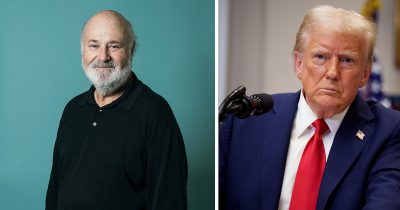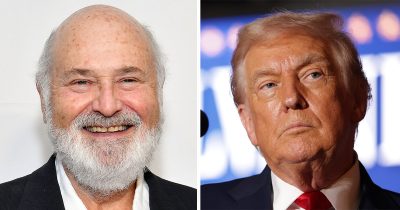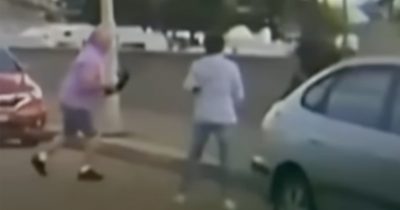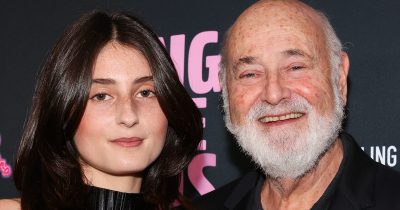
She agreed to help a friend – but what happened next changed her life forever.
Charla Nash wasn’t a celebrity. She didn’t seek the spotlight. She was just a kind-hearted woman trying to help a friend in need. But one unthinkable moment would thrust her into the public eye — and leave the nation stunned.
It started with a phone call. Her longtime friend, Sandra Herold, was frantic. Her beloved pet chimpanzee, Travis, had taken Sandra’s car keys and left her house in Stamford, Connecticut, with them.
The 55-year-old Charla, always loyal and dependable, rushed over to help and tried to get Travis back inside his closure. But what happened next would become one of the most horrifying animal attacks in American history.
When Charla walked up to Travis, the 200-pound chimpanzee suddenly snapped. The sight of her holding an Elmo doll — once one of his favorite toys — sent him into a violent, uncontrollable rage.
Inside the brutal attack
The attack was brutal. Travis tore off her hands, her nose, her eyelids, and lips.
Sandra, the 70-year-old owner of Travis, attempted to stop him by beating Travis on the head with a shovel and stabbing him in the back with a butcher knife. She later said Travis looked back at her as if to say, “Mom, what did you do?”
”For me to do something like that, put a knife in him, was like putting one in myself,” Sandra later said.
When Charla was lying lifeless on the ground, Sandra called 911. At first, the operator thought the call was a hoax — until Sandra cried out: “He’s eating her!”
When emergency vehicles arrived, they found Charla face down in the driveway.
Emergency services were ordered to hold back until police arrived. When they came, the chimpanzee was far from done.
Travis stormed toward the patrol car, violently shaking it, attempting to pry open the locked passenger door, and even ripped off the side-view mirror. Stamford police officer Frank Chiafari recalled the sheer terror of that moment.
“It was like ‘Jurassic Park,’” he said in a documentary about the incident. “We’re looking at each other and he pulls the door (of the police car) right off.”
Officer Chiafari opened fire. Travis retreated back into the house, where he eventually died from his injuries.
“It was a horrendous, terrible scene,” Chiafari recalled.
Raised him like her son
Travis was no ordinary pet. Born in Missouri in 1995, he was taken from his biological mother, Suzy, at only three days old and sold to Sandra and her husband, Jerome.
They raised him at their home in Stamford, Connecticut, where he became a local celebrity. Travis, named after Sandra’s favorite singer Travis Tritt, appeared in TV commercials, lived a pampered life, and even performed household tasks like watering plants, feeding horses, and brushing his teeth.

He had a strong bond with Sandra, who treated him like her surrogate son after the tragic death of her own child and her husband’s battle with cancer.
Travis was incredibly humanized, often seen riding in the tow truck with Sandra, eating at the dinner table, and even drinking wine from a glass. He had an astonishing ability to mimic human behavior — he could even drive a car. Yet, despite these remarkable qualities, Travis was still a chimpanzee, and like all primates, he possessed extraordinary strength. A full-grown chimpanzee’s upper-body strength can be up to five times greater than that of an average human.
What triggered the response?
Even though Travis knew Charla — she had worked at Sandra’s towing company —he didn’t recognize that she meant no harm that fateful day in February, 2009.
On the day of the attack, she was driving a different car and had a new hairstyle, which may have startled and confused him, triggering his violent response.
Travis had also been suffering from Lyme disease, which in rare cases is linked to psychotic behavior.
Charla was rushed to the hospital in critical condition. Doctors had to place her into a medically induced coma. In just 72 hours, she underwent over seven hours of surgery, involving four teams of surgeons working to save what they could of her face and hands.
“I’ve been doing this a long time and have never seen anything this dramatic on a living patient,” said Capt. Bill Ackley of Stamford Emergency Medical Service and the head of the paramedic crew that treated Charla.
The damage was almost beyond comprehension. Charla had lost her eyelids, nose, lips, mid-face bone structure, and nine fingers. Embedded in her shattered bones were clumps of the chimp’s hair and teeth, which doctors had to remove.
Staff at Stamford Hospital were so traumatized that grief counseling was offered to those who first treated her. Tragically, doctors confirmed that both her eyes had become infected, leaving her permanently blind.
”I don’t want to remember”
She was transferred to the Cleveland Clinic, where she became a candidate for an experimental face transplant. Meanwhile, her family created a trust fund to help with her “unfathomable” medical expenses and to support her young daughter.
On November 11, 2009, Charla bravely revealed her face to the world for the first time since the attack — appearing on The Oprah Winfrey Show. Despite everything, her relatives said she was not in physical pain and remained hopeful about her recovery.
”I don’t want to remember, because I couldn’t imagine what it was like,” she told Oprah. ”I want to get healthy. I don’t want to wake up with nightmares.”
In 2011, in a groundbreaking procedure, Charla Nash received a full face transplant at Brigham and Women’s Hospital in Boston. The surgery lasted over 20 hours. The world watched in awe.
The woman who had once been called ”unrecognizable” was now a living miracle.
Photos of her transformation before and after the attack continue to circulate online — haunting reminders of the unimaginable trauma she survived… and the unbreakable spirit that carried her through it.
”I’ve always known that I’ve been strong,” she said. ”If I couldn’t do anything, I just took my time, took a breath and then tried it again.”
Fought for her rights as a victim
Instead of hiding, Charla also used her voice. She bravely appeared on shows like Oprah and The Today Show, not for fame, but to warn others. She became a vocal advocate for stricter exotic animal laws, hoping no one else would suffer as she had.
”I’d like to put across to people’s minds that these exotic animals are very dangerous and they shouldn’t be around,” she told Oprah.
Charla also received support from numerous organizations and wildlife experts who rallied behind her in the aftermath of the attack.
”They are wild animals, and all wild animals are potentially dangerous,” says Colleen McCann, a primatologist with the Wildlife Conservation Society (WCS) and New York’s Bronx Zoo. “They are not pets. This is tragic, but it’s not surprising.”

Charla fought for her rights as a victim. She tried to sue the state of Connecticut for $150 million, arguing the Department of Energy and Environmental Protection failed to act on prior warnings about the chimp.
There had been warning signs before. Back in 2003, Travis escaped from Sandra’s car and caused chaos by holding up traffic at a busy intersection — he remained on the loose for several hours.
Charla claimed that authorities were well aware of Travis’s dangerous behavior but failed to act. Although her legal claim was ultimately denied, her bravery ignited a national conversation about the risks of keeping exotic animals as pets.
Sandra’s death
Charla’s family attorney filed a $50 million lawsuit against Sandra Herold. In November 2012, Charla reached a settlement with Sandra’s estate, securing approximately $4 million in compensation.
Sandra died just 15 months after the brutal chimpanzee attack. She passed away died unexpectedly from a ruptured aortic aneurysm at the age of 72. Her attorney, Robert Golger, shared a poignant statement following her passing:
”Ms. Herold had suffered a series of heartbreaking losses over the last several years, beginning with the death of her first and only daughter who was killed in a car accident, then her husband, then her beloved chimp, Travis, as well as the tragic maiming of friend and employee Charla Nash. In the end, her heart, which had been broken so many times before, could take no more.”
Aftermath
The whole tragedy led to legislation like the Captive Primate Safety Act, which sought to prohibit the sale of primates across state lines. While the bill faced setbacks, it was reintroduced in 2024, showing that Charla’s fight for change continues to resonate.
Officer Frank Chiafari, the man who ultimately had to shoot and kill Travis the chimp, struggled with depression and anxiety following the traumatic incident—but at the time, he couldn’t access therapy. His emotional ordeal sparked a proposed 2010 bill aimed at ensuring police officers could receive compensation for mental or emotional distress after being forced to use deadly force on an animal.

This horrific story should never have happened — but it did. And while the pain and trauma are unimaginable, Charla Nash’s courage to speak out and survive remains nothing short of extraordinary.
Her bravery sparked a crucial conversation about the dangers of keeping exotic animals as pets and led to much-needed changes meant to protect both humans and animals alike.
Her story stands as a powerful reminder: may something like this never happen again.
READ MORE
- Holly Madison shares ‘disturbing’ details about life with Hugh Hefner
- Prince William and Kate Middleton’s bold parenting changes




